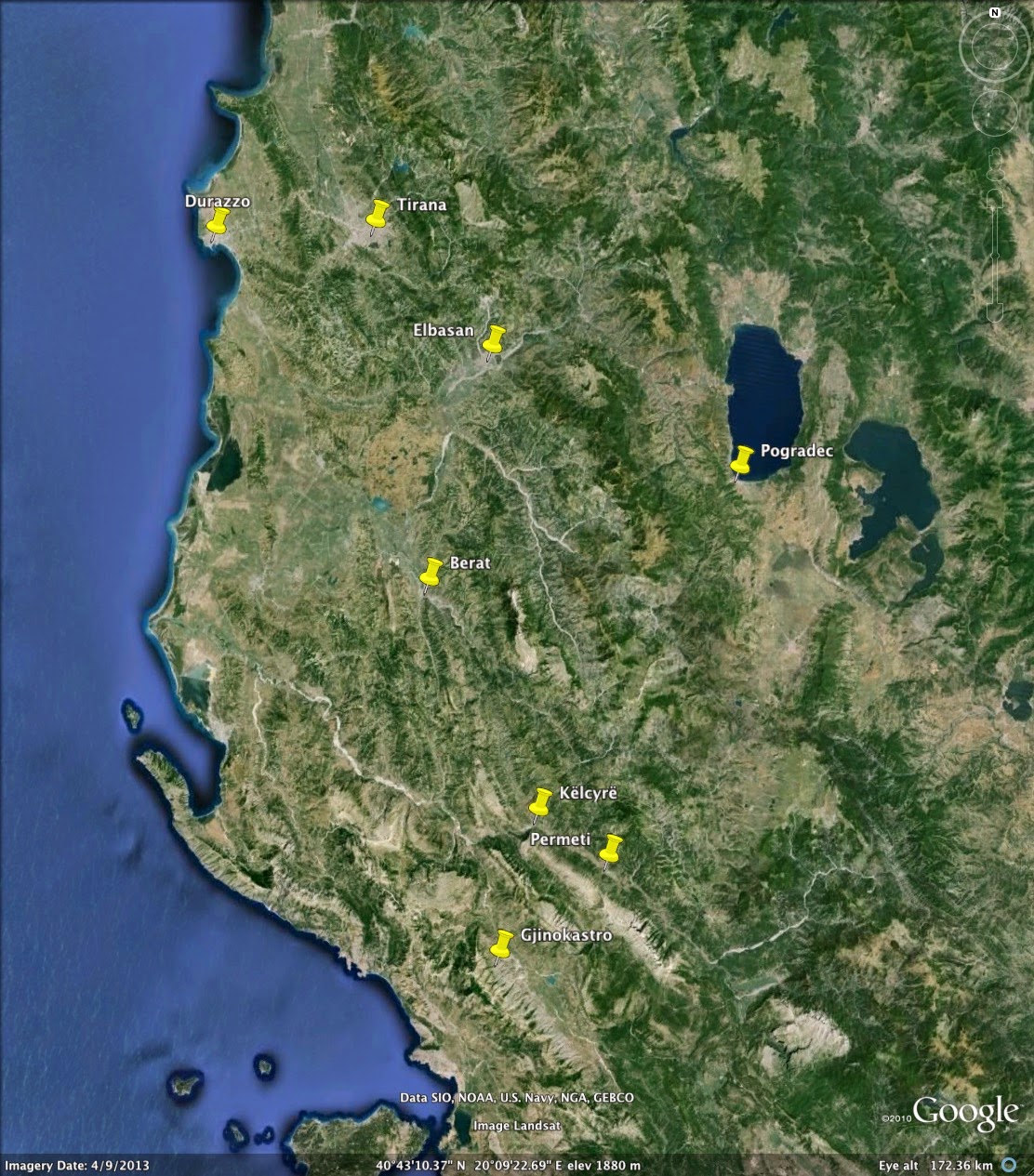Jan and Cora Gordon in Portugal 1933
Passenger records for 1933 reveal that Jan and Cora Gordon departed for Lisbon from Liverpool on board the Arlanza, leaving Southampton on the 6th May 1933. Jan Gordon was 51 and Cora 54. They arrived back in Liverpool on the 11th August 1933, on board the Deseado Royal Mail ship.
The account of this journey can be found in Book II of "Portuguese Somersault", Book I being concerned with an earlier and less successful trip after which they had vowed never to go back.
At the end of their first visit they had purchased a pottery bull in Amarante for one escudo (about twopence-halfpenny at the time)."The body was bright orange, and it stood on stiff orange legs. From each side of a golden, conical head enormous horns spread out with a subtle and striking double curve. The tail was bent in a loop, and the lower half was attached to the side of the leg." This bull is illustrated on the cover of the book and also makes an appearance in a picture of their London flat in Clanricarde Gardens.
The account of this journey can be found in Book II of "Portuguese Somersault", Book I being concerned with an earlier and less successful trip after which they had vowed never to go back.
On the Arlanza to Lisbon, May 1933
At the end of their first visit they had purchased a pottery bull in Amarante for one escudo (about twopence-halfpenny at the time)."The body was bright orange, and it stood on stiff orange legs. From each side of a golden, conical head enormous horns spread out with a subtle and striking double curve. The tail was bent in a loop, and the lower half was attached to the side of the leg." This bull is illustrated on the cover of the book and also makes an appearance in a picture of their London flat in Clanricarde Gardens.
Cover of Portuguese Somersault (1934)
On the second journey the Gordons made four trips: a pilgrimage to Fatima; a trip to Beja, Mertola and The Algarve; a third to Evora, Elvas, Portalegre and the Castello de Vide; Marvão and the wine-shop in Castello de Vide; and finally a visit to Nazareth.
The route of the second Portuguese journey
The Gordons had timed their visit to be able to participate in the Fatima pilgrimage honouring the vision of the Blessed Virgin seen by three children on May 13, 1917. They progressed with the crowds towards a large stone altar, "hollowed like a basin, into which the pilgrims were throwing the ends of their candles and tapers ..." They observe that "religion and superstition in Portugal often go back apparently to the most primitive beliefs and practices of the folk; and here we had, not only a most convenient way of getting rid of candle ends - always something of a problem after a big procession - but possibly also a burning sacrifice, echo perhaps of the vestal fires of ancient Rome."
Pilgrimage to Fatima
The Algarve trip took them through Elvas, close to the border with Spain (a place I visited in 1990). They were impressed by the Elvas policeman, but not by the situation of the cafe placed exactly opposite the gaol. They found a Pensão with a broad terrace providing an enchanting view of the town.
Labyrinths of whitewash at Elvas
They were delighted one day to find a family with guitars. The father was blind. "At last the blind man had his guitarra in tune with his wife's guitar, which in Portugal is called a viola. Then, at our request, they began to play an accompaniment and obbligato, while the round-cheeked daughter sang a fado."
The blind singer
During the third trip the Gordons visited a wine-shop in Castello de Vide and found the owners delighted that Jo [Cora] thought their shop, with its elegant earthenware pots, worth painting.
The wine shop at Castello de Vide
At Nazareth they found a town of holidaymakers and fishermen, a "striking contrast of ease and poverty. A painting of the fishermen of Nazareth is shown in Jack Bilbo's obituary for Jan Gordon.
The boats of Nazareth
The book ends with the sight of whole families of women and children, all dressed in black sleeping out on the Nazareth beach, reminding Jo [Cora] of "Five-and-twenty blackbirds baked in a pie." They were told that they did this every summer, letting their houses to visitors, homeless all the summer long to amass enough money to keep themselves from starving during the winter. "..the flat yellow sand, lit here and there by the glimmers of the lamps along the front, backed by the dark mute hulls of the beached boats, and, scattered over the wide space, those patient women, shrouded in their shawls like small self-contained tents."











Comments
Post a Comment